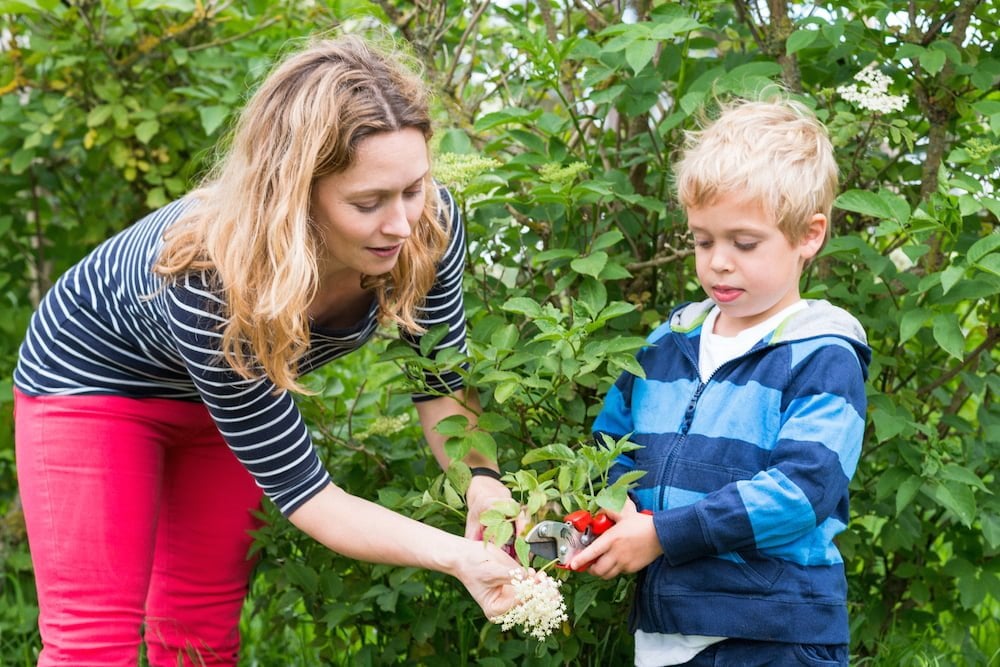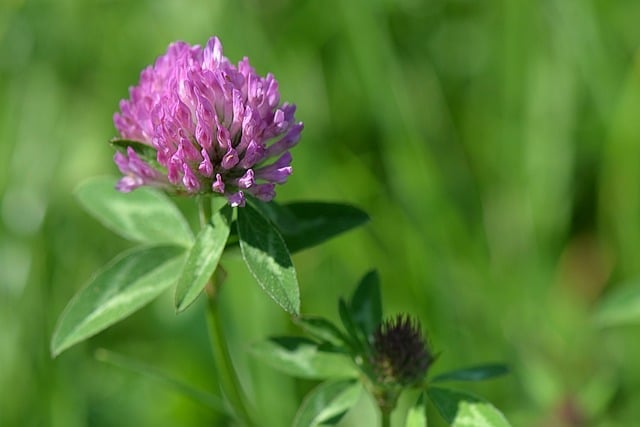Learning the Art of Foraging for Wild Food
Foraging is the ancient practice of finding and preparing wild food. It’s not only convenient and cost-effective, it can be more nutrient dense than most foods you find in the supermarket.
Learning to forage is pretty simple. Kate Blincoe, author of The No-Nonsense Guide to Green Parenting shares these guidelines for finding food safely, honestly, and sustainably.
Let me tell you about a little shop I know. It’s just down the road and is stocked with the very best seasonal produce that is as fresh as can be.
Oh, and all the food is free – you simply help yourself.
The proprietor is very well respected in environmental circles, and goes by the name of Mother Nature.
The benefits of foraging for wild food
If that sounds a bit too good to be true, I’m not talking about some fancy organic store for celebrities that you can’t access, but something we can all do. Simply get out and about in the countryside, looking for edible plants, fruits and nuts.
Free stuff is always satisfying, but foraging for dinner is also a wonderful way of exploring your local area, learning about nature and discovering your inner hunter-gatherer.
Wild food is the greenest imaginable – it is seasonal and free from pesticides, herbicides, packaging and food miles. Unlike growing your own, the hard labor has already been done by nature. It is worth remembering that once upon a time, all food was wild and uncultivated.
At first you may wander aimlessly, wondering if you can make grass soup, but soon you’ll be spotting edible opportunities and experimenting with more unusual ingredients. It really makes you look at your world differently. In early May, I will spot elderflower everywhere, and watch the buds for that perfect moment when they burst into creamy fragrant flowers.
Many foods you can forage have incredible levels of nutrition that out-perform supermarket-bought ‘super-foods’ such as broccoli and spinach. Nettles, for example, are packed with calcium, potassium and vitamin C. Given that it is often a matter of minutes from picking to plate, you also know that all the goodness is maximized.
Children delight in foraging
The desire to pick something up and taste it is innate – we spend a lot of effort training infants out of this practice, so foraging can feel like a leap of faith. Your carefully constructed boundaries can become complicated as you try to explain ‘those berries will make you poorly but these ones are good for you’.
In my experience, children over the age of three can understand this and soon learn what’s okay to eat. Your absolute rule can be to check with an adult before tasting anything. Those younger than three need close supervision with this activity, as they do with pretty much anything.
Children behave differently with food they have found and collected themselves. Blackberries out of a supermarket tub would be considered too tangy by my children, but when picked straight off the bush (even the ones that, to my eyes, look a little under-ripe) are declared amazing.
It’s a good basis for imaginative play too. Pretend you are lost in the woods and to survive you will need to find your own food. For older children, it’s a chance to be an intrepid adventurer like Bear Grylls or Ray Mears.
Foraging is one of those educational activities where the purpose makes the learning fun. You can take a guide book, looking for details that help you identify a specimen and work through identification keys together. Foraging is also a great chance to talk about risk and how you decide if something is safe to do.
Let’s face it, foraging is never going to replace the weekly shop, and many a time you will come back from your foray empty-handed. Nevertheless, what you and your family will have gained is exercise, a sense of adventure and a deeper understanding of your environment.
Now that is worth muddy boots and a few bramble scratches!
Foraging Guidelines & Safety
Only eat plants and fruits you are 100% sure you have correctly identified. There are only two mushrooms I will eat (giant puffball and penny bun) because the others are too complicated for my current level of knowledge. The risk of getting it wrong is not worth it, especially where children are concerned.
Avoid most wild food when pregnant – for example, pine needles can induce miscarriage in some animals but would be fine normally (pine needle tea is lovely). Always carry a good field guide with detailed illustrations. Double-check online at home with the plant in your hands.
Avoid roadsides and paths. Traffic fumes and dog wee don’t make great accompaniments to dinner.
Dog feces contains the eggs of the dangerous Toxocara Canis worm, so avoid areas where there could be dog muck. Wash your produce carefully too, to remove grit, dirt, and any little creatures.
Children and adults should wear trousers, wellies (boots), and long sleeves for foraging, as you will often find yourselves wading through long grass or reaching through prickles. Gloves are vital for sweet chestnut and nettle collection.
Keep your foraging sustainable
Don’t over harvest any particular food. The golden rule for foraging is never to take the whole plant or all the berries or nuts. Never collect more than you will use.
Leave some for wildlife and to ensure it is still alive and thriving the next time you want a little wildness for dinner.
And keep it legal
So off you merrily go into the countryside, helping yourself to nature’s bounty … but hang on, is it nature’s bounty or Mr Smith’s – are you in fact stealing?
Are you allowed to forage without being a criminal? The Theft Act of 1968 created a number of offenses against property in England and Wales and states that:
“A person who picks mushrooms growing wild on any land, or who picks flowers, fruit or foliage from a plant growing wild on any land, does not (although not in possession of the land) steal what he picks, unless he does it for reward or for sale or other commercial purpose.”
In short, intended use is what counts. So don’t go selling your amazing nettle muffins, please.
Do make sure you have permission to be on the land, and don’t stray too far from public rights-of-ways such as footpaths unless you have first checked with the landowner.
Your Foraging Year
For beginners and accompanied children, here’s a rough guide to the plants you can collect throughout the year. Remember, their availability will depend upon the weather and location. Be sure to look up each item in a field guide before you start.
Winter: sweet chestnuts, pecans, rose hips, dandelions, seat beet
Spring: wild garlic, wild violets, stinging nettles, burdock, clover (see Kate’s recipe for Red Clover Lemonade)
Summer: elderflowers, mint, seaweed, marsh samphire, blackberries, giant puffballs, wild grapes
Fall: elderberry, sweet chestnuts, persimmons
Foraging FAQs
How do I get started foraging?
Start with something you see often and in plenty supply. Dandelion, wild garlic (onion grass), nettles, or chickweed. Pay attention to them throughout the seasons to see when they seem the most viable and plentiful.
What makes a good foraging bag?
The best bag for collecting your foraged goods might actually be a basket. Some of your foods like mushrooms are extremely fragile and will break apart if not carefully handled. Avoid plastic, and opt for an open top bag, basket, or bucket with proper airflow and sturdy sides.
How should I store wild greens?
Follow the advice here on how to store fresh food plastic-free. Don’t over wash or your greens may wilt faster. Line the crisper drawer with a fresh dish towel (change it every few days). In humid climates, greens last a little longer in an organic canvas produce bag.
If you have a question, comment below and we’ll add it to the list.
Image by Phil Barnes Photography


